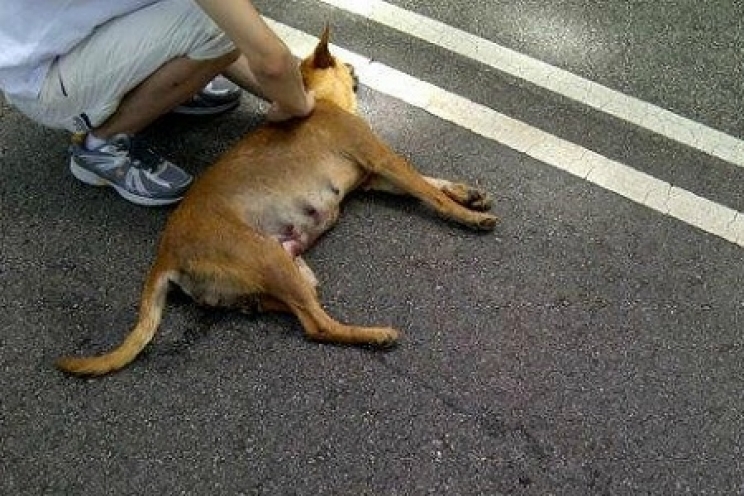This problem really affects many owners. When the dog runs away from home, in most cases he does not do it because he cannot stand us anymore and wants to run away, but he just wants to take a breath of fresh air. By running away, however, he might get lost, but also might come across the typical dangers of the road, such as cars or other dogs with which he could fight. Here's how to fix it.
Why does the dog run away?
As we have just said, in most cases dogs don't want to run away from us specifically. The reasons why they could decide to run away can be many. For example:
- He had previous habit of going out and going to the toilet on his own.
- Before adopting it, he lived in an outdoor place, like a countryside, albeit fenced;
- He gets bored because he doesn't have enough stimuli;
- Tends to get too excited in some situations, for example the sound of the intercom;
- He is afraid of something in the house or garden and tries to get away;
- Outside the house there is something particularly interesting that awaits him (other "friends" animals, people who offer him food, stimuli to hunt);
- Feels the presence of a female dog in heat to conquer;
- The dog runs away in search of a companion;
- He simply enjoys devising new plans to escape.
Each of these situations hides a very specific reality: the dog finds something more pleasant outside, compared to our presence and his home. Therefore, we must begin to ask ourselves questions about our relationship with him, evaluating if we really do our best to create a pleasant, peaceful and fun environment for him.
What to do
Although many owners tend to ignore a problem of this type, in reality it is a situation that must be stopped immediately. None of us would like to live with a segregated dog at home, but, as mentioned above, the dangers present outside are real and are also very dangerous and harmful.
Think, for example, of the dog running in the street while we chase after him desperately. Speeding cars, bunch of dogs, children, poisoning risks are just some of the dangers present.
The dog must absolutely have the opportunity to go out, but all together, under our constant control. We will determine where and when to free him for a good run, protected from dangers.
For this reason, the first thing we have to do, as obvious as it may seem, is to make sure that the dog is equipped with a collar with an identification tag, in addition to the microchip so we can be able to localize him if he runs further away from us.

Therefore, to prevent them from running away you can bring padlocks, reinforced locks, fences and anything that can help you seal doors and windows. Remember that dogs can jump, so even if they are very small, they can surprise you with incredibly agile leaps. Avoid leaving possible "trampoline" furniture around the fence or balcony.
In addition, we should enrich our dog's space and time with many pleasant activities, so he can play with us or on his own. Old cuddly toys, pull-and-spring ropes, food-filled toys, intelligence boards. Everything can be used to fight boredom.
Remember that the dog has an extreme need to socialize, not only with us "humans", but also with his fellow companions. If you really don't have the opportunity to adopt another dog for him to play with, go to green areas for dogs close to your city or try to arrange some activities with friends and acquaintances that have a pet. The socialization classes organized by educators are also excellent.
Finally, if the dog is not sterilized yet, and you do not intend to mate your dog in the future, the best solution is to resort to this surgery. No door lock is able to resist the call of nature!
Let's move onto the behavioural aspect.
A very useful thing to do in these cases is to teach the dog to respond to our calls, which all owners should do. To find out how, read our specific guide on this topic carefully.
Alternatively, for those who have time, desire and patience to devote to dog education, you can teach your friend to wait for our command before leaving the house, with or without us. To do this, we will use the usual snack or clicker technique, but we will have to be familiar with the "stay" command first.
- Let's stand in front of the entrance door
- We ask the dog to sit or lie on the ground, to make him understand that we want him to stand still and to devote all his attention to us
- Communicate the "stay" command, rewarding the first few times without doing anything. So we continue getting closer to the front door and returning to reward him every time
- At this point we touch the handle, press the dog gently and continue until we can keep the dog still even with the door wide open
If we are handling frightened dogs, the situation is quite different. If the cause of the escape is fear, then you will have to carve out a safer corner in its personal space, for example with a kennel or a table, which can help him feel safe.










